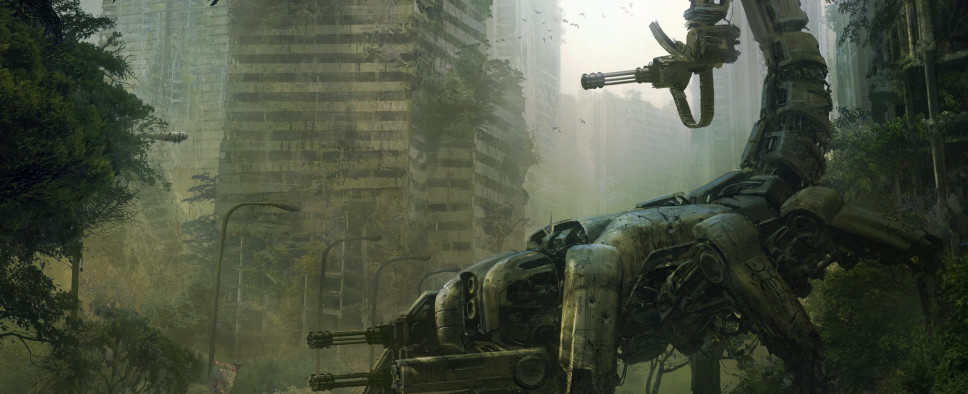Wasteland 2 Review
-
Category: ReviewsHits: 19198

Article Index
It's also worth noting that one of the reasons combat can feel exasperating at times is that most of it is absolutely mandatory. While the encounter rate can be mitigated by using Outdoorsman and moving carefully around the maps, there is still a lot of fighting to do through a full playthrough. Seen from this lens, it's not difficult to understand why many encounters don't feel as compelling as they should: there's simply too many of them for each and every one to feel properly polished and curated. A part of me simply can't help but wonder if I'd feel the same way if stealth hadn't been cut from the game during production, but I guess I'll never know.
I also have a few other minor problems with the combat system, problems that I wouldn't even feel worth mentioning if the core was more compelling and complex: there is no way to properly position your characters before the start of an encounter, there is only one standard ammo type per weapon, the enemy and ally AI is unsophisticated, there are fewer enemy types than I expected and not as distinct as I'd hoped, and cover isn't conveyed well from a visual standpoint, especially outside of combat.
On the upside, though, the game can often feel challenging, especially without a thoroughly optimized party. I ran into plenty of situations where I had to save a character on the brink of death by putting my specialized medic into the line of fire, and even lost a couple of NPCs along the way. Resources are a little tighter than in most RPGs too, which can occasionally make even dull encounters feel meaningful and important. Ultimately, though, Wasteland 2's combat has too many problems to feel genuinely satisfying, and could have used more robust mechanics to offset its uneven encounter design. There's still fun to be had, but there are plenty of classics that did it better.
Exploration
When talking about exploration and level design in Wasteland 2, we're actually talking about two different gameplay phases. There's the navigation of actual areas with a full party, which takes up the bulk of the time spent exploring. In addition to that, there's also an abstract world map system that sees the player's party move from location to location. It involves managing the party's water supply and fending off hostiles along the way, and allows a player to discover new maps, hidden caches and oases, among other things.
Some zones on the world map are blocked by radiation walls that will damage a party without the properly upgraded radiation suits, which makes exploration feel more gated than it would be otherwise. That said, the map system still gives Wasteland 2 more breathing room and suggests a larger, dangerous world, sidestepping a bundle problems relating to the encounter rate and environments' size that players of the 3D Fallouts will be very familiar with.
Unfortunately, though, inXile didn't fully capitalize on the system they built. There isn't enough to discover in the world map. Sure, there are a few random caches and mysterious shrines (they reward a player with either skill or experience points) that pop out with regularity, and I appreciate that. However, the overwhelming majority of locations is either uncovered during the main storyline or pointed out by radio calls from fellow Desert Rangers. Some maps really feel like they would have been perfect for the players to stumble upon on their own, and seeing them doled out to the player via the radio feels like a lost opportunity.
As for the areas themselves, they tend to feature convoluted and generally messy layouts, but hit the right notes when it comes to size and optional paths. The vast majority of them are fairly large and feature a lot of optional content in addition to giving multiple, often skill-based ways to reach its points of interest. I take issue, however, with inXile's philosophy concerning loot distribution: I can't think of any location that didn't contain a frankly ludicrous amount of locked and trapped containers. Loot and resources are fairly important in Wasteland 2 so it's not a good idea to ignore these containers, but checking them all can feel exhausting, and I wish they were rarer and more spaced out.
I mentioned Fallout 2 earlier in the review, a title absolutely nailed the balance between quest-heavy interconnected hubs and more combat-heavy dungeon-like areas, so I should also note that Wasteland 2 relies comparatively too much on the latter. This is especially evident in the first half of the game: Highpool, the Ag Center, and to a lesser extent the Prison and Damonta place a premium on combat. As a player progresses through the main quest there's a gradual shift from shooting to talking and exploring, culminating with extremely satisfying locations like Angel Oracle and the aforementioned Hollywood. I strongly believe that the game's pacing would have really benefitted from breaking this progression more often than it does.


